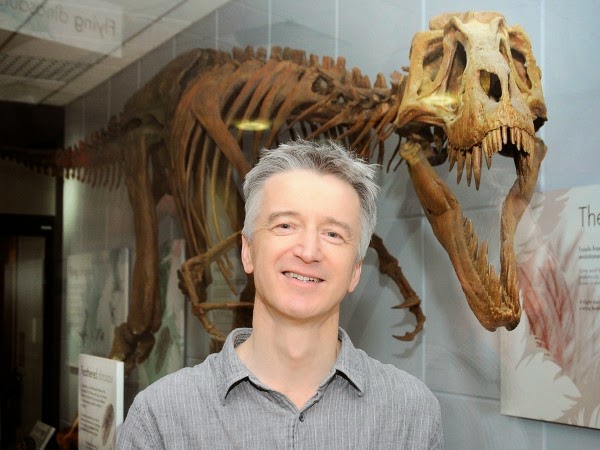 Last week, scientists reported finding rocks made of plastic on a Hawaiian beach. Some researchers have speculated that these and other humanmade objects could become part of the fossil record, defining a human-dominated period of Earth’s history called the Anthropocene. Science chatted with Jan Zalasiewicz, a paleontologist at the University of Leicester in the United Kingdom and a leading scholar on the Anthropocene, about the kinds of things humans are leaving behind—and what they’ll look like millions of years hence.
Last week, scientists reported finding rocks made of plastic on a Hawaiian beach. Some researchers have speculated that these and other humanmade objects could become part of the fossil record, defining a human-dominated period of Earth’s history called the Anthropocene. Science chatted with Jan Zalasiewicz, a paleontologist at the University of Leicester in the United Kingdom and a leading scholar on the Anthropocene, about the kinds of things humans are leaving behind—and what they’ll look like millions of years hence.This interview has been edited for clarity and brevity.
Q: You have called these humanmade fossils “technofossils.” What are they, and how are they different from normal fossils?
A: Technofossils are basically all the things we manufacture, large and small. Because most of them are preservable, they can potentially become fossils—particularly since, unlike nature, we’re so poor at recycling the things we make. They can survive for thousands, millions, perhaps billions of years in rock strata [rock or sediment layers] in the future. We think they deserve a separate category because there’s so much about them that is distinct.
Q: What kinds of things can we expect to survive in the fossil record for millions of years, and what will they look like after all that time?
A: Looking around at my room, I’m struggling to see anything that is not fossilizable. So let’s take my desk—wood can fossilize really quite well. We’ve helped along the process of fossilization of this wood because it’s been seasoned, dried out, and varnished. It’s much less edible than it was in its original state on the tree.
With clothes, a lot of them are made from plastic polymer objects or cotton—plant materials. So they will fossilize just as plants do. They can preserve a good deal of the fabric. Under the right circumstances, one can preserve leaf cells and the like for millions of years—but the chemistry will change, they will become carbonized. You will lose the colors, and they’ll become black shapes.
Even paper is fossilizable. Now clearly, if that makes it into a stratum, it will become a carbonized lump. Probably the information on the pages is not easily fossilizable. It would be very hard to read newsprint from pages.
This computer I have in front of me, I see plastic, titanium, bits of rubber, a fair bit of this—if buried in the stratum—it will at least leave a nice oblong detail and impression, probably parts of the structure itself. But the information will be gone. Just as we can fossilize a songbird, it’s much harder to fossilize the song itself.
Q: Are some cities more likely to preserve technofossils than others?
A: In San Francisco, Earth’s crust is rising. It’s being eroded and the material is being washed away to areas where the crust is subsiding. So an upland place like San Francisco will be eroded, and the fragments will wash into the sea. Los Angeles and the northwest of Britain—Manchester, say—are also on long-term upward-moving crust. These are both also destined to be eroded away.
New Orleans, in contrast, is on a delta. It’s on what’s called a tectonic escalator, going downwards because that’s what the crust is doing, and because it’s being loaded by all the sand and mud being washed off from the Mississippi River. New Orleans is ripe for fossilization, all of the structures, the pilings, the concrete pilings, tens of meters into the ground to keep the skyscrapers up. And all of the stuff that’s underground: pipework, sewage, the electric.
Other places might be Amsterdam, Venice, Shanghai, coastal deltas on coastal plains. These places are ripe for fossilization.
Q: What will future beings be able to infer about us from these fossils?
A: The technofossils will strike them as quite different as anything that’s come before. We have the whole history we see through archaeology. Metals—Bronze [Age] first, then Iron and so on, different types of tools. And then we go into the Industrial Revolution and on to the space age and beyond.
If you’re looking at the point of the perspective of the future paleontologist, either human or nonhuman or space visitor or hyperevolved rat or whatever, as a geologist one thing will strike them. will be crammed into a very small physical space. The stratum itself may not be much more than a few meters thick. In many places, it may only be a few centimeters thick. It will probably appear instantaneous, and it will be very hard work to figure out the path of this hyperevolution of the technofossils within the human stratum.
Note : The above story is based on materials provided by Angus Chen , © 2014 American Association for the Advancement of Science. All Rights Reserved.










